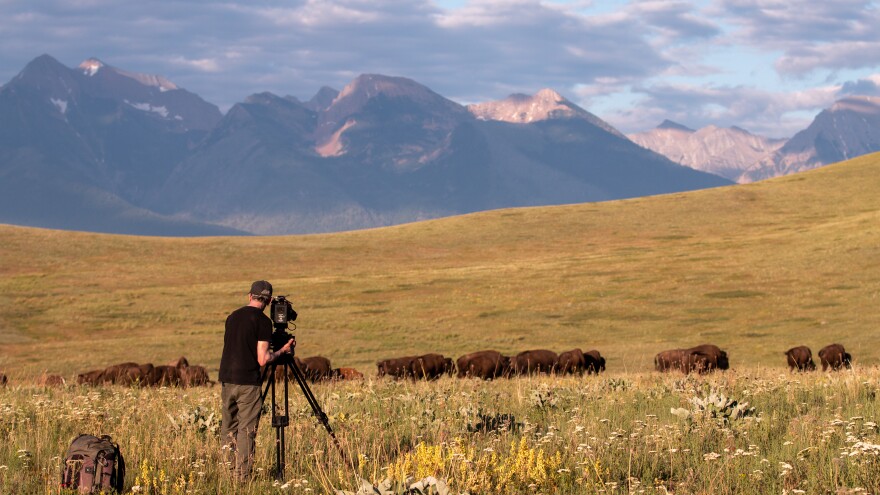A new PBS documentary, “The American Buffalo,” traces the history of our country’s national mammal and its significance to the people in North America. The film takes viewers on a journey from a time when millions of bison roamed, to their near extinction, and finally, the conservation efforts to save the iconic animal.
The two-part series was written by New Hampshire screenwriter and producer Dayton Duncan, who collaborated with documentarian Ken Burns on the project. The two have worked together for over 30 years.
“The American Buffalo” is Duncan’s final documentary before he steps away from filmmaking, and he spoke with All Things Considered host Julia Furukawa about it. Below is a transcript of their conversation.
Transcript
The buffalo has touched some of your other projects throughout the years. I'm thinking of the National Parks series. But why did you decide to make a film specifically focusing on this animal?
It's a story that needed to be told in its whole. We told it in parts in four of our other films. But Ken and I, for more than 30 years, have been wanting to tell it in its entirety. And even though it's a, if you will, a biography of an animal, it really is much more than that. It's about human beings' interactions with that magnificent beast. And it's about two different views of how human beings should interact with the natural world. And it touches on a whole array of deep history on this continent and also the history of our nation as it moved westward.

So as you said, this film, of course, it's about the American buffalo, but it really does have a deep focus on people. So, can you tell us what the story of the American buffalo maybe says about us as a people?
It proves the second half of the coin, which is: Are we capable as a nation of doing utter destruction to the natural world? Yes, our history shows that we are. And the near elimination of tens of millions of buffalo is probably exhibit A of that. But, are we also capable of changing direction, which is a message for our time today? Are we willing, if we face our past, to say ‘no, that was going in the wrong direction and let's turn it in a different one?’ And that's a hopeful message, I think. And that's the second half of our film.
Can you tell us who the key players in that effort were?
There's an awful lot of fascinating characters in the story of the American buffalo, and they range from individuals of Indigenous nations, both in terms of helping us understand the importance of buffalo to Native people, both for their sustenance physically, but also for their worldview of of a almost kinship relationship with them that was 10,000 years old when Columbus first bumped into a continent he didn't know existed.
And then there are a lot of characters that people might recognize, from Theodore Roosevelt to Buffalo Bill Cody. Some of them participated in the slaughter of the buffalo in the late 19th century. But there are so many other characters in that second half of our story, the redemptive part of it, that range from Native people on reservations in South Dakota and in northwestern Montana to here in New Hampshire, an idealistic nature writer. Each of them usually had their own motives for why they wanted to save the buffalo. But we're happy and fortunate that they did.
I heard you mention a player in this story from New Hampshire. I guess I don't often think of buffalo having a relationship to our state here. Could you tell me how you discovered this person and maybe a little bit more about them?
Like you, I was amazed that there was once a buffalo herd in New Hampshire and even more amazed as I worked on this film that a nature writer from Boston named Ernest Harold Baines who was up at a private game preserve near Newport, Corbin Park, that had a herd of buffalo in it. But he became obsessed, if you will, by the buffalo herd. And he decided to help try to launch a national movement to preserve the species from extinction. It's a very unlikely story without any question that New Hampshire played, not a minor role whatsoever, in what became the national movement to preserve what is now the national mammal.









